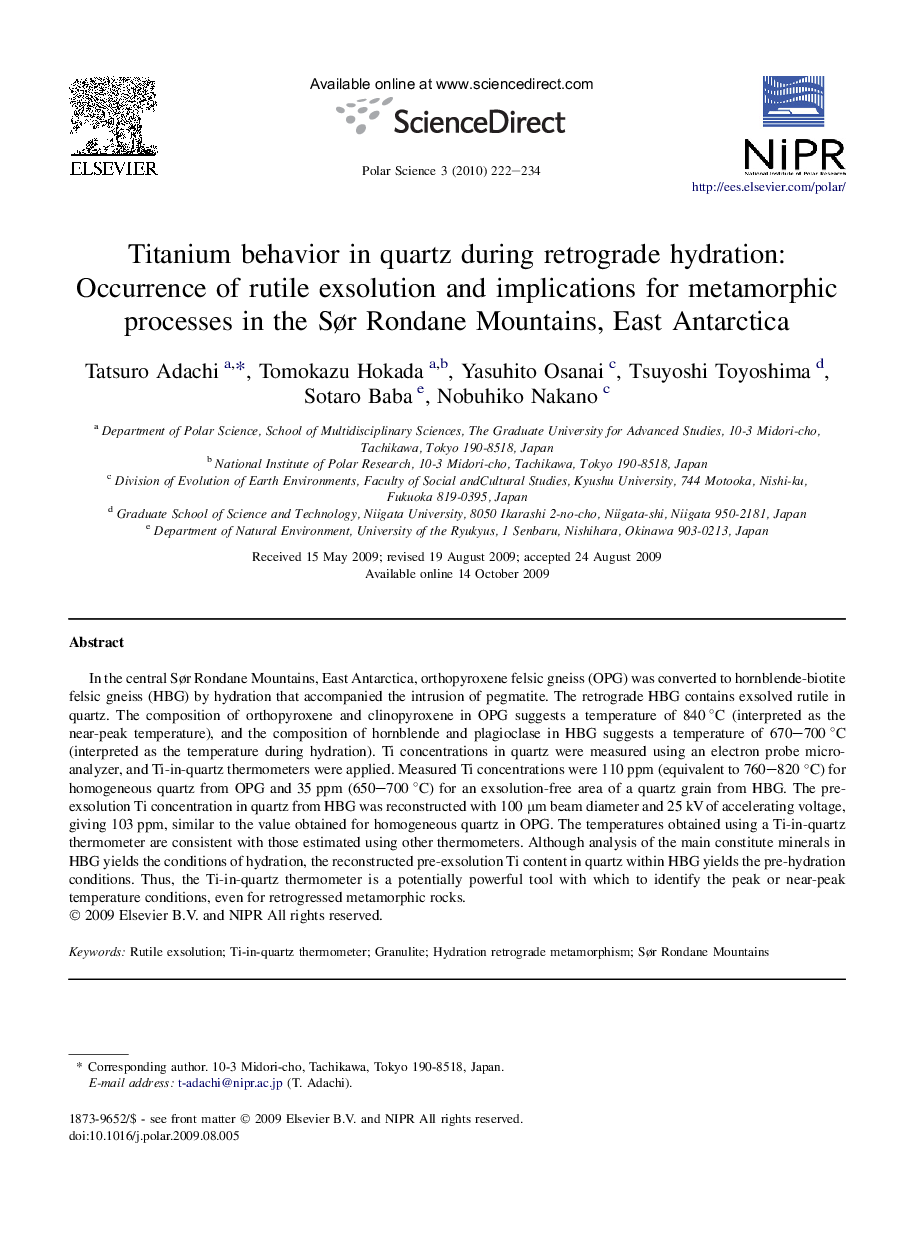| Article ID | Journal | Published Year | Pages | File Type |
|---|---|---|---|---|
| 4683348 | Polar Science | 2010 | 13 Pages |
In the central Sør Rondane Mountains, East Antarctica, orthopyroxene felsic gneiss (OPG) was converted to hornblende-biotite felsic gneiss (HBG) by hydration that accompanied the intrusion of pegmatite. The retrograde HBG contains exsolved rutile in quartz. The composition of orthopyroxene and clinopyroxene in OPG suggests a temperature of 840 °C (interpreted as the near-peak temperature), and the composition of hornblende and plagioclase in HBG suggests a temperature of 670–700 °C (interpreted as the temperature during hydration). Ti concentrations in quartz were measured using an electron probe micro-analyzer, and Ti-in-quartz thermometers were applied. Measured Ti concentrations were 110 ppm (equivalent to 760–820 °C) for homogeneous quartz from OPG and 35 ppm (650–700 °C) for an exsolution-free area of a quartz grain from HBG. The pre-exsolution Ti concentration in quartz from HBG was reconstructed with 100 μm beam diameter and 25 kV of accelerating voltage, giving 103 ppm, similar to the value obtained for homogeneous quartz in OPG. The temperatures obtained using a Ti-in-quartz thermometer are consistent with those estimated using other thermometers. Although analysis of the main constitute minerals in HBG yields the conditions of hydration, the reconstructed pre-exsolution Ti content in quartz within HBG yields the pre-hydration conditions. Thus, the Ti-in-quartz thermometer is a potentially powerful tool with which to identify the peak or near-peak temperature conditions, even for retrogressed metamorphic rocks.
